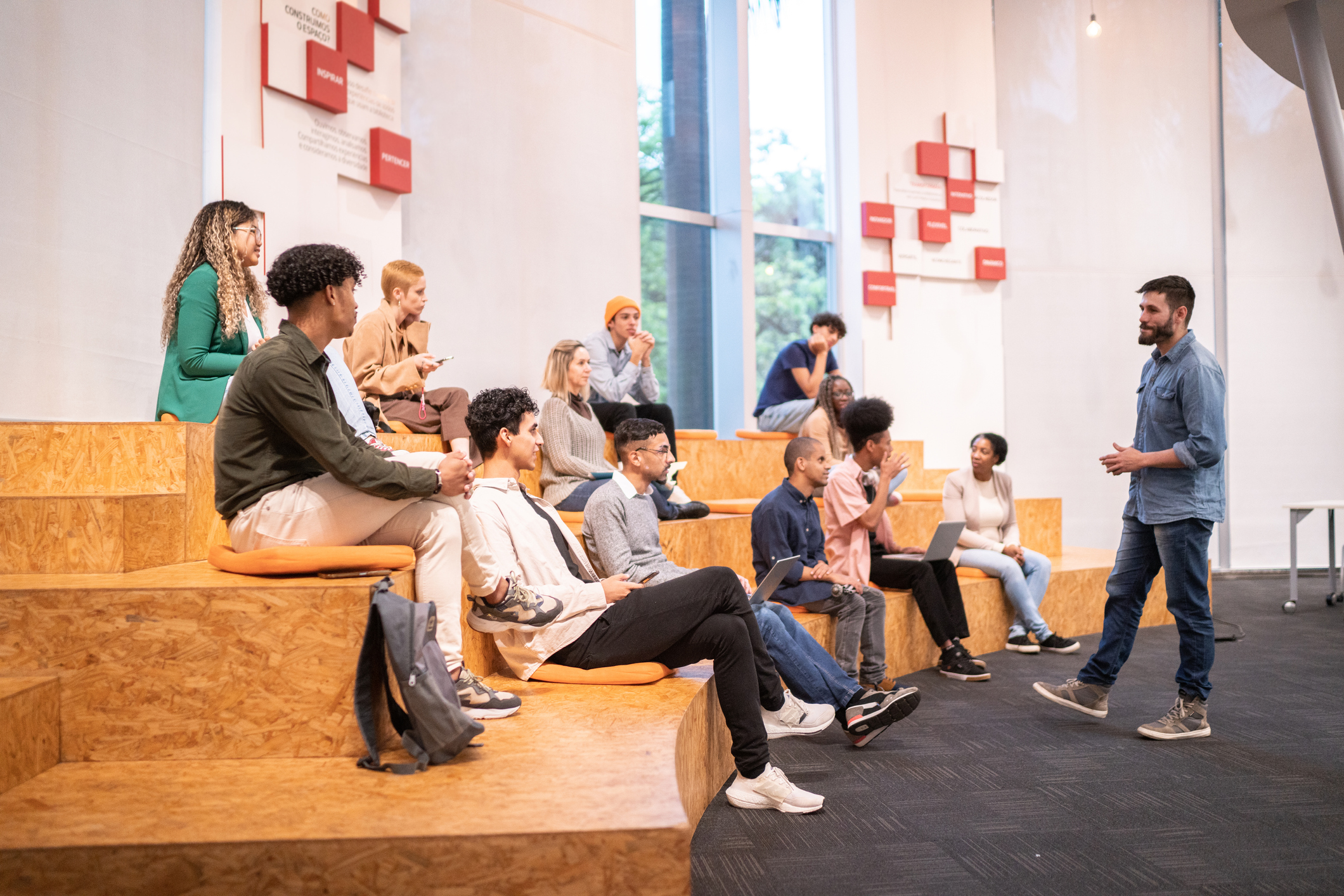In recent years, there has been a growing recognition of the impact that trauma can have on students’ learning and overall well-being. As educators, it is crucial that we understand the importance of trauma-informed teaching and how to create a safe and supportive environment for our students. One key aspect of this approach is building trust and connection with our trauma-affected students.
Trust forms the foundation of any successful relationship, and it is especially vital in trauma-informed teaching. When students have experienced trauma, they may be hesitant to trust others due to feelings of vulnerability and fear. As educators, it is our responsibility to create an atmosphere in which students feel safe, respected, and understood.
Building trust with trauma-affected students requires intentional effort and a deep understanding of their unique needs. In this blog post, we will explore why trust is fundamental in trauma-informed teaching and provide strategies for building trust with our students. We will also discuss the role of connection in the classroom and how it contributes to trauma recovery.
Additionally, we will delve into the significance of healthy relationships in trauma-informed teaching. Research has shown that positive relationships can have a profound impact on students’ ability to heal from trauma and succeed academically. We will explore ways to develop healthy relationships with trauma-affected students and discuss the effects of these relationships on their overall well-being.
Finally, we will provide practical steps for implementing trust, connection, and relationships in trauma-informed teaching. From creating a supportive classroom environment to measuring success, we will offer insights and guidance to help educators effectively support their trauma-affected students.
Join us on this journey as we explore the crucial role of building trust and connection through relationships in trauma-informed teaching. Together, we can create a learning environment that fosters healing, growth, and success for all our students.
Understanding Trauma-Informed Teaching: An Overview
Trauma-informed teaching is an approach that recognizes the impact of trauma on students’ lives and seeks to create an environment that promotes safety, trust, and healing. It involves understanding the prevalence of trauma and its effects on students’ behaviour, learning, and overall well-being.
To effectively implement trauma-informed teaching, educators must first have a solid understanding of the core principles and concepts that underpin this approach. This section will provide an overview of trauma-informed teaching, covering key aspects such as its definition, guiding principles, and the rationale behind its importance.
What is Trauma-Informed Teaching?
Trauma-informed teaching refers to an educational framework that acknowledges the prevalence of trauma and its potential impact on students’ lives. It involves creating a safe and supportive learning environment that takes into account the unique needs of trauma-affected students.
The Guiding Principles of Trauma-Informed Teaching
There are several guiding principles that shape trauma-informed teaching practices. These principles include:
- Safety: Prioritizing physical and emotional safety for all students by creating a supportive and predictable environment.
- Trustworthiness: Building trust with students through consistent and reliable interactions, fostering a sense of safety and predictability.
- Empowerment: Promoting student autonomy, choice, and voice to empower them and help restore a sense of control.
- Collaboration: Recognizing the importance of collaboration and partnership between educators, students, families, and the community to support student well-being.
- Cultural Sensitivity: Acknowledging and respecting students’ cultural backgrounds and experiences, and ensuring inclusivity in the classroom.
The Rationale for Trauma-Informed Teaching
Understanding the rationale behind trauma-informed teaching is crucial for educators to grasp the significance and impact of implementing this approach. Some key points to consider include:
- Prevalence of Trauma: Recognizing that trauma is more common than we may realize, with a significant number of students experiencing adverse experiences that can affect their learning and behaviour.
- Impact on Learning: Understanding how trauma can hinder students’ ability to learn, regulate emotions, and form positive relationships, affecting their academic performance and overall well-being.
- Trauma-Sensitive Schools: Recognizing the need for schools to become safe and supportive environments that address trauma-related issues, rather than exacerbating them.
- Resilience and Healing: Acknowledging that trauma-informed teaching can promote resilience and support students’ healing processes, enabling them to thrive academically and personally.
By gaining a comprehensive understanding of trauma-informed teaching, educators can lay the foundation for creating a trauma-sensitive classroom environment that fosters trust, connection, and growth. In the following sections, we will delve deeper into specific aspects of building trust and connection in trauma-informed teaching.
The Importance of Building Trust in Trauma-Informed Teaching
Building trust is a fundamental aspect of trauma-informed teaching. Students who have experienced trauma may have difficulties trusting others due to their past experiences. As educators, it is crucial to create a safe and supportive environment where students feel comfortable and secure. This section will explore why trust is essential in trauma-informed teaching and the impact it has on students’ well-being and academic success.
Why Trust is Fundamental in Trauma-Informed Teaching
- Emotional Safety: Trust forms the basis for creating emotional safety in the classroom. When students trust their teachers, they are more likely to feel secure, open up about their experiences, and seek support when needed.
- Regulation of Stress Response: Trust helps regulate students’ stress response systems. Trauma-affected students often experience heightened levels of stress and anxiety. When they trust their teachers, they feel safer and more supported, which can help regulate their stress response and promote a sense of calm.
- Building Resilience: Trust contributes to the development of resilience in trauma-affected students. By building trusting relationships, educators provide students with a foundation of support and belief in their abilities, helping them overcome adversity and develop resilience.
- Academic Engagement: Trust is closely linked to students’ academic engagement. When students trust their teachers, they are more likely to actively participate in class, seek help when needed, and engage in learning activities without fear or hesitation.
Strategies for Building Trust with Trauma-Affected Students
- Consistency and Predictability: Establish consistent routines, clear expectations, and predictable classroom structures to create a sense of safety and trustworthiness.
- Active Listening: Practice active listening by giving students your full attention, validating their experiences, and demonstrating empathy. This helps build trust and shows that you genuinely care about their well-being.
- Respect Boundaries: Respect students’ boundaries and personal space. Allow them to have control over their own bodies and choices, and avoid any actions or behaviours that may trigger feelings of discomfort or violation.
- Building Rapport: Take the time to get to know your students as individuals, showing interest in their lives, hobbies, and aspirations. Engage in friendly conversations to build rapport and foster a sense of connection and trust.
- Trauma-Informed Language: Use trauma-informed language that is sensitive and respectful. Avoid making assumptions or asking intrusive questions about students’ personal lives.
- Collaborative Problem-Solving: Involve students in decision-making and problem-solving processes. This empowers them and helps build trust by demonstrating that their opinions and contributions are valued.
Overcoming Barriers in Establishing Trust
- Patience and Persistence: Building trust takes time, especially for students who have experienced trauma. Be patient, persistent, and consistent in your efforts to establish trust, understanding that it may not happen immediately.
- Cultural Sensitivity: Be mindful of cultural differences and ensure that your teaching practices and approaches respect and align with students’ cultural backgrounds. This helps create a safe and inclusive environment where trust can flourish.
- Trauma-Informed Professional Development: Seek out professional development opportunities to enhance your understanding of trauma and trauma-informed teaching strategies. This will equip you with the knowledge and skills needed to overcome barriers and build trust effectively.
By prioritizing trust-building strategies, educators can create a classroom environment that supports trauma-affected students and fosters their overall well-being and academic success. In the next section, we will explore the role of building connection in trauma-informed teaching and its impact on students’ healing and growth.
Building Connection in the Classroom: A Crucial Component of Trauma-Informed Teaching
Building a strong connection with students is a crucial component of trauma-informed teaching. Connection refers to the establishment of meaningful relationships between educators and students, creating an environment where students feel understood, valued, and supported. This section will explore the role of connection in trauma-informed teaching, its impact on students’ trauma recovery, and strategies for fostering connection in the classroom.
The Role of Connection in Trauma Recovery
- Emotional Support: Connection provides students with the emotional support they need to navigate their trauma experiences. When students feel connected to their teachers and peers, they have a safe space to express their emotions and seek comfort and understanding.
- Sense of Belonging: Connection fosters a sense of belonging for trauma-affected students. Being part of a supportive community helps counteract feelings of isolation and alienation that often accompany trauma experiences.
- Regulation of Emotions: Connection plays a vital role in helping students regulate their emotions. When students feel connected, they are more likely to develop effective coping strategies, manage stress, and regulate their emotions in a healthier way.
- Self-Worth and Identity: Connection contributes to the development of students’ self-worth and identity. When students feel valued and accepted, they are more likely to have a positive self-perception and believe in their abilities to overcome challenges.
How to Foster Connection with Trauma-Affected Students
- Building Positive Relationships: Develop positive relationships with students based on trust, respect, and empathy. Show genuine interest in their lives, celebrate their strengths, and support them through challenges.
- Trauma-Informed Communication: Use trauma-informed communication strategies that prioritize sensitivity and understanding. Choose your words carefully, validate students’ experiences, and avoid actions or language that may retraumatize or trigger distress.
- Non-judgmental Attitude: Maintain a non-judgmental attitude towards students’ behaviours and reactions. Understand that trauma-affected students may exhibit various responses, and it is essential to respond with compassion rather than judgment.
- Empowerment and Choice: Provide students with opportunities for autonomy and choice in their learning. Empower them to make decisions, express their preferences, and take ownership of their education.
- Collaborative Activities: Engage students in collaborative activities that promote teamwork and cooperation. This fosters a sense of belonging and connection among students and provides opportunities for positive social interactions.
Challenges in Building Connection and How to Resolve Them
- Resistance to Trust: Some trauma-affected students may resist building connections due to past experiences of betrayal or abandonment. Patience, consistency, and demonstrating reliability can help overcome this resistance over time.
- Fear of Vulnerability: Trauma-affected students may have a fear of being vulnerable and opening up to others. Creating a safe and non-judgmental environment where students feel supported and respected can help alleviate this fear.
- Cultural Sensitivity: Be aware of cultural differences and ensure that your approach to building connections is culturally sensitive. Respect and honour students’ cultural backgrounds, traditions, and values.
- Time Constraints: Building connections takes time and effort. Dedicate regular opportunities for one-on-one interactions, small group discussions, and community-building activities to prioritize connection-building within the constraints of the classroom schedule.
By focusing on building connections with trauma-affected students, educators can create a sense of safety, belonging, and support in the classroom. In the following section, we will explore the significance of healthy relationships in trauma-informed teaching and how they contribute to students’ healing and growth.
The Role of Healthy Relationships in Trauma-Informed Teaching
Healthy relationships play a crucial role in trauma-informed teaching. When trauma-affected students experience supportive and positive relationships with their teachers and peers, it can have a profound impact on their healing and overall well-being. This section will explore why relationships matter in trauma-informed teaching, ways to develop healthy relationships with trauma-affected students, and the effects of these relationships on their trauma recovery.
Why Relationships Matter in Trauma-Informed Teaching
- Sense of Safety and Trust: Healthy relationships provide trauma-affected students with a sense of safety and trust, creating an environment where they feel secure to express themselves and seek support.
- Emotional Support: Relationships offer emotional support to trauma-affected students, allowing them to share their experiences, emotions, and challenges without fear of judgment or rejection.
- Validation of Experiences: Healthy relationships validate the experiences of trauma-affected students. When they feel heard, understood, and validated, it helps them make sense of their trauma and promotes healing.
- Social Skills Development: Positive relationships contribute to the development of social skills in trauma-affected students. Through interactions with supportive peers and teachers, they learn communication, empathy, and conflict resolution skills.
Ways to Develop Healthy Relationships with Trauma-Affected Students
- Consistent and Careful Communication: Maintain consistent and open communication with trauma-affected students. Be mindful of your tone, body language, and choice of words to ensure they feel respected and valued during interactions.
- Empathy and Understanding: Show empathy and understanding towards trauma-affected students. Demonstrate genuine care and concern for their well-being, validating their experiences and emotions.
- Individualized Support: Recognize the unique needs of each trauma-affected student and provide individualized support. Tailor your teaching strategies, accommodations, and interventions to meet their specific needs.
- Building a Supportive Classroom Community: Foster a supportive classroom community where students respect and support one another. Encourage collaboration, empathy, and inclusivity to develop a sense of belonging and connection among students.
Effects of Positive Relationships on Trauma Recovery
- Increased Resilience: Positive relationships with teachers and peers contribute to the development of resilience in trauma-affected students. They provide a source of support, encouragement, and belief in their abilities to overcome challenges.
- Improved Academic Performance: Healthy relationships have a positive impact on students’ academic performance. When trauma-affected students feel supported and connected, they are more likely to engage in learning, participate actively, and succeed academically.
- Enhanced Well-being: Positive relationships promote overall well-being in trauma-affected students. They experience reduced stress levels, improved emotional regulation, and a greater sense of self-worth and identity.
- Long-lasting Positive Impact: Healthy relationships can have a lasting impact on trauma-affected students beyond the classroom. They provide a foundation for building healthy relationships in other areas of their lives and contribute to their long-term healing and growth.
By prioritizing the development of healthy relationships with trauma-affected students, educators can create a supportive and nurturing environment that fosters their healing, resilience, and academic success. In the next section, we will explore practical steps for implementing trust, connection, and relationships in trauma-informed teaching.
Implementing Trust, Connection, and Relationships in Trauma-Informed Teaching
Implementing trust, connection, and relationships in trauma-informed teaching requires intentional effort and a systematic approach. In this section, we will explore practical steps that educators can take to create a trauma-informed classroom environment that prioritizes trust, fosters connection, and promotes healthy relationships with trauma-affected students.
Practical Steps for Teachers
- Educate Yourself: Continuously educate yourself about trauma and its impact on students. Attend workshops, read books, and engage in professional development opportunities to enhance your understanding of trauma-informed teaching.
- Reflect on Your Teaching Practices: Reflect on your current teaching practices and assess how they align with trauma-informed principles. Identify areas for improvement and make necessary adjustments to create a more supportive and trauma-informed classroom.
- Build Self-Awareness: Develop self-awareness of your own biases, triggers, and reactions when working with trauma-affected students. Cultivate a non-judgmental mindset and practice self-care to ensure you can provide the best support to your students.
- Establish Clear Expectations: Set clear expectations for behaviour, academic performance, and classroom routines. Communicate these expectations to students and ensure they understand what is expected of them, providing a sense of structure and predictability.
- Create a Safe Physical Environment: Design the physical environment of the classroom to promote safety, comfort, and a sense of belonging. Consider factors such as lighting, seating arrangements, and displays that create a welcoming and supportive atmosphere.
Integrating Trust and Connection into the Classroom Environment
- Use Trauma-Informed Language: Incorporate trauma-informed language and vocabulary into your daily interactions with students. Be mindful of the words you use and avoid triggering or retraumatizing language.
- Implement Regular Check-Ins: Schedule regular check-ins with individual students to assess their well-being, progress, and any challenges they may be facing. Provide a space for them to express their thoughts and feelings in a safe and supportive manner.
- Incorporate Social-Emotional Learning (SEL): Integrate social-emotional learning activities into your curriculum. Teach students skills such as self-awareness, self-regulation, empathy, and conflict resolution to enhance their emotional well-being and promote positive relationships.
- Cultivate a Trauma-Informed Mindset: Approach student behaviour with a trauma-informed mindset. Instead of punitive measures, focus on understanding the underlying reasons behind their behaviours and respond with compassion and support.
Measuring Success in Trauma-Informed Teaching
- Student Feedback: Actively seek feedback from students regarding their experiences in the classroom. Provide opportunities for them to share their thoughts, suggestions, and concerns, and use this feedback to inform your teaching practices.
- Observations and Documentation: Regularly observe and document students’ progress in terms of their engagement, emotional well-being, and academic growth. Keep records of their achievements and areas that need further support.
- Collaboration and Professional Learning Communities: Engage in collaboration and professional learning communities to share experiences, strategies, and best practices with other educators. Learn from one another and continuously refine your trauma-informed teaching approach.
By implementing these practical steps, educators can create a trauma-informed teaching environment that nurtures trust, fosters connection, and promotes healthy relationships with trauma-affected students. Remember, building trust and connection takes time, patience, and ongoing effort. With dedication and a trauma-informed mindset, educators can make a significant impact on the healing and growth of their students.







